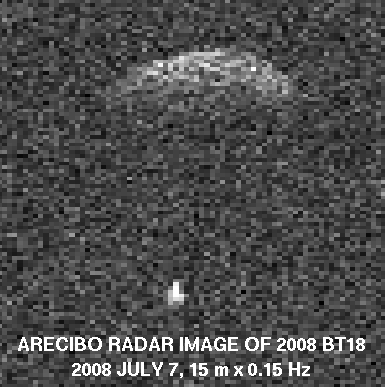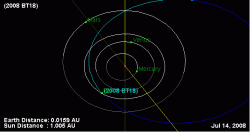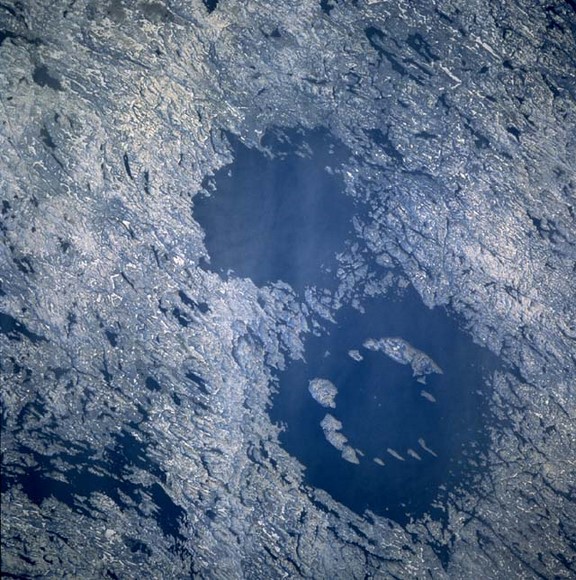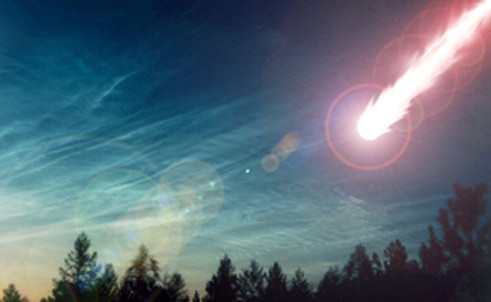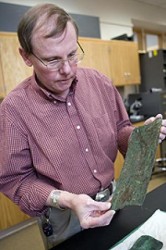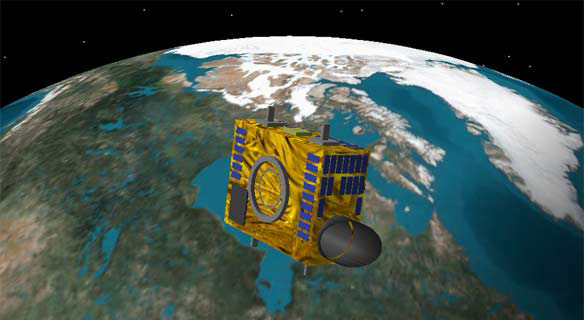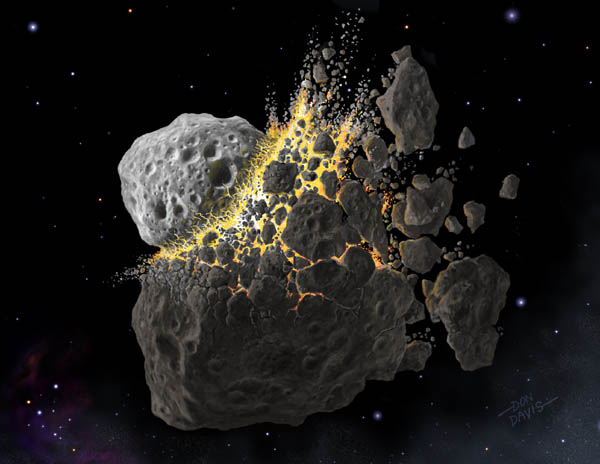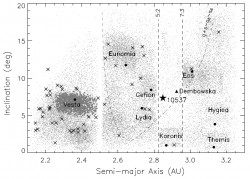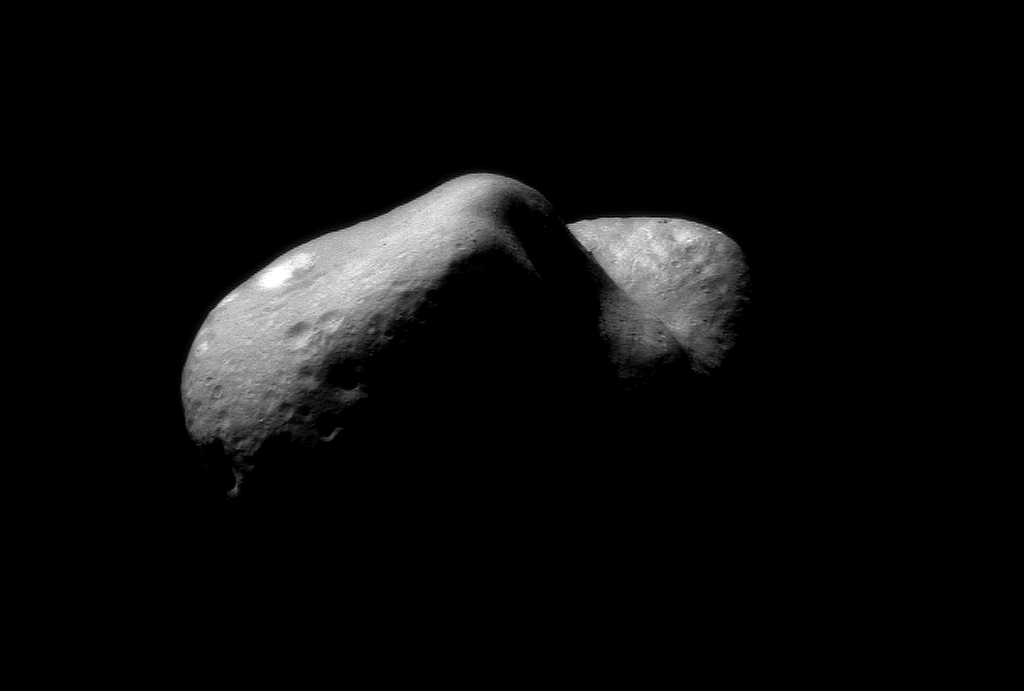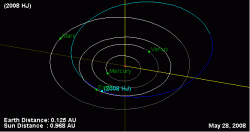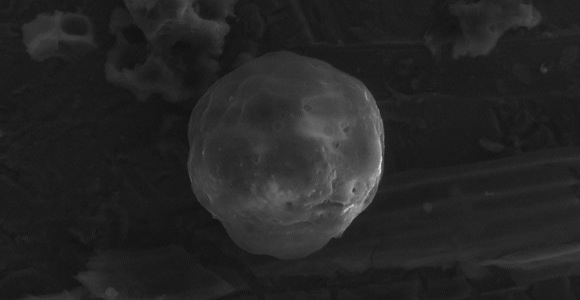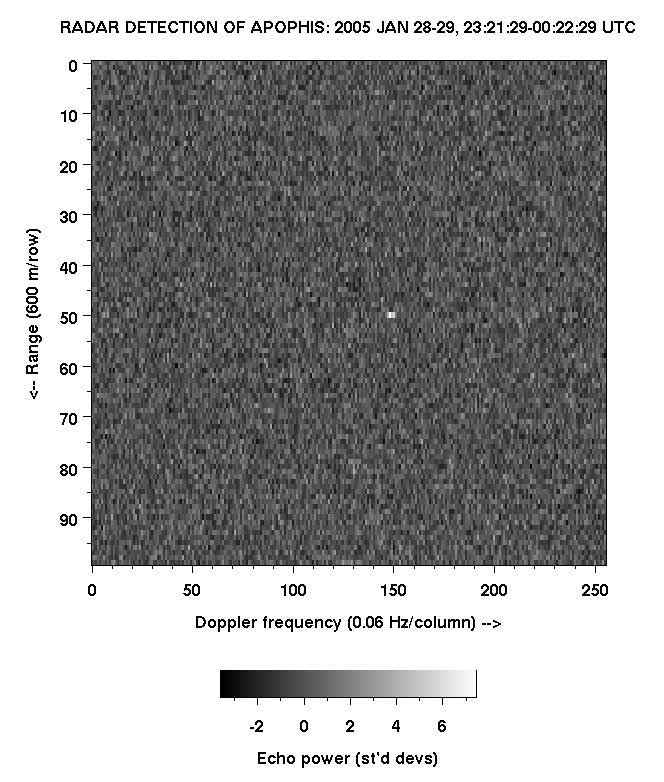A rare event has given astronomers a great view of a binary asteroid system. Tonight, asteroid 2008 BT18 passed 1.4 million miles from Earth, shining like a 13th magnitude star. Before July 7th, astronomers believed 2008 BT18 was “just another” near-Earth asteroid, but then the Arecibo radio telescope obtained a “delay-Doppler” image of the asteroid and found it in fact had a binary partner. Although binaries are fairly common in the Solar System, this was a rare opportunity for a ground-based telescope to capture such a clear view…
Only last week, Nancy wrote about binary asteroids and double craters found on Earth may be evidence that our planet has been hit by binaries in the past. As the article was being written, the Arecibo radio telescope in Puerto Rico was taking a detailed look at a binary asteroid approaching Earth. Although asteroid 2008 BT18 posed no threat to Earth, astronomers are very keen to learn more about binary asteroids to understand how they form and how they may be deflected from a collision course with Earth should a binary get too close.
About 16% of asteroids in the Solar System are thought to be binaries, so this event was a great opportunity for Arecibo to image 2008 BT18 and it could be seen by amateur astronomers as a 13th magnitude star. The Arecibo observatory has discovered 53% of all near-Earth binaries, so this seasoned radio telescope is an important component in the observation of these objects.
The asteroid binary was fairly sizeable but passed about six times the Earth-Moon distance from us. “The sizes of the two components are 600m for the primary and >200m for the secondary,” said Lance Benner, a scientist from NASA’s Jet Propulsion Laboratory (JPL). “The primary looks spheroidal, but we don’t yet know about the shape of the secondary.”
Other telescopes are analyzing the binary orbit, asteroid masses and density of the two objects, such as NASA’s Goldstone radar in the Mojave Desert, California. Although Goldstone is smaller than Arecibo, there is a strong echo for scientists to analyze the data collected from the passage of the asteroid pair. According to spaceweather.com, observers in the Southern Hemisphere had the opportunity to see 2008 BT18 pass through the constellation of Canis Major, heading south.
Source: Spaceweather.com

